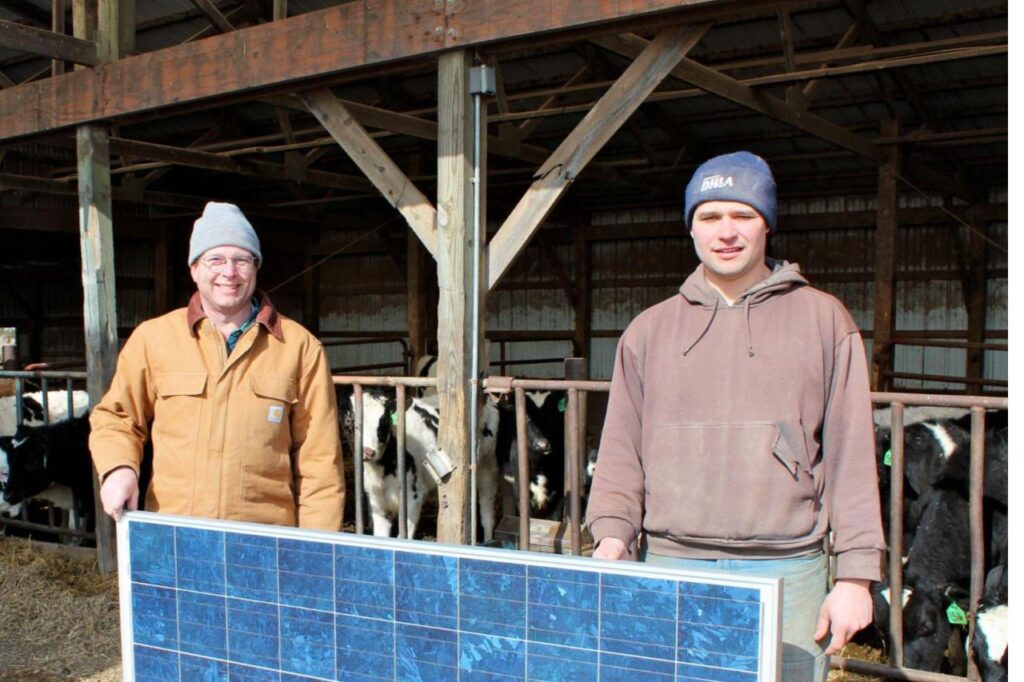Last week, Congress passed the “Inflation Reduction Act,” a federal budget delivering hundreds of billions of dollars in clean energy subsidies and tax credits. Among the laundry list of available financial incentives is the U. S. Department of Agriculture’s (USDA) hidden gem of a program: the Renewable Energy for America Program (REAP).
“I’ve successfully installed solar arrays for more than 20 farmers and rural small businesses in West Missouri using REAP,” said Jeff Droz, who owns Roof Power Solar in Rich Hill, Missouri. “REAP grants pay for 25% of the installation costs, and there is an additional federal tax credit that covers 30% of the total cost. When you add those together, that means a farmer or business can pay off their solar array in between three and five years while eliminating their monthly electric bills altogether.”
REAP grants can pay for a variety of renewable energy or energy efficiency projects for rural entrepreneurs, but solar arrays are among the most popular. “There’s some paperwork involved for sure, and it does take some time,” according to Droz, “but it’s very do-able and I’m excited for what these next couple of years are going to bring for solar growth in rural communities.”

REAP grants are considered “competitive,” as budgets are limited. But the recently-passed federal budget is going to exponentially increase available funds during at least 2023 and 2024, offering up hundreds of millions in available cash and loans for rural America. These additional funds should make obtaining REAP funds more likely for applicants.
Applications are due October 31, 2022 and March 31, 2023. Each state determines which applicants are successful. State offices of USDA Rural Development manage the program.
Those interested in installing solar arrays work with solar panel installation companies to determine size, scale, productivity, and costs. The installer, such as Roof Power Solar, can assist the farmer or small business owner with the application process.
To begin the process, farmers and rural business owners should contact solar energy companies who operate in their geographic area. Though online solar panel company directories are numerous, Droz says the member directory of the Solar Energy Industry Association is a good place to find credible solar installers. He also recommends using professionals with certified credentials through the North American Board of Certified Energy Practitioners.
Droz says that there are some important state and local nuances to solar design and installation. Solar owners in some states have more incentives than others, as well as the opportunity to earn income from electricity generation. These local standards and regulations are important in determining size and scale of projects.\
Grants are more likely to be awarded for projects that reduce current energy bills. Bonus points are awarded to applications from military veterans or “socially disadvantaged” applicants, USDA’s definition for Black, Indigenous, Hispanic, Latino, or other nonwhite racial and ethnic groups.
Funds may also be used for the purchase, installation, and construction of energy efficiency improvements. Eligible expenses could include:
- High efficiency heating, ventilation, and air conditioning systems (HVAC)
- Insulation
- Lighting
- Cooling or refrigeration units
- Doors and windows
- Electric, solar, or gravity pumps for sprinkler pivots
- Switching from a diesel to electric irrigation motor
- Replacement of energy-inefficient equipment
REAP has helped over 20,000 farmers, ranchers, and rural small businesses produce clean energy, cut energy costs, and boost rural economic development, according to the Environmental Law and Policy Center (ELPC), who runs the “Repowering the Rural Midwest” program. The organization advocates for more REAP funding to “provide climate solutions while helping agriculture and rural communities to adapt to, and prosper in, a low carbon future.”
ELPC reports that REAP grants have helped to leverage more than $7 billion in private capital for renewable energy and energy efficiency improvements in rural America. “USDA has identified REAP as a top program for confronting climate change, Andy Olsen, ELPC’s senior policy advocate testified to Congress in April.
To determine if solar energy is a good fit for your farm or small business, Solar United Neighbors also has a specific page for farmers and rural small businesses interested in using REAP grants. Solar United Neighbors also has a free “Go Solar Guide” to help walk you through the process.